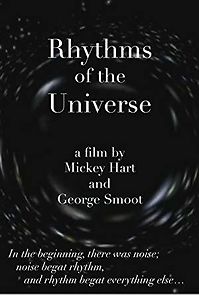|
In the beginning, there was noise. Noise begat rhythm, and rhythm begat everything else. We are descendants of the Big Bang, the original downbeat. We are multi-dimensional rhythmic machines, vibrations in the collective cycles and patterns of the universe. The first sound in the universe was pure noise: the big bang. Its reverberations, still ongoing, are the source of the cosmic rhythm - a dance of particles and atoms spinning out galaxies, stars, and planetary systems - finding its own groove, gradually bringing out order. That order is a harmony, incredibly involved and interdependent, like a heavenly clockwork. We’ve always looked up to the sky and wondered what lies beyond. Our ancestors dedicated their holiest sites to understanding the sky and its cycles. The planets orbit the sun at their own frequencies. Pythagoras was the first to interpret this as sound - the music of the spheres. Our understanding of the solar system has matured since the time of Pythagoras, yet his central tenet of the universe operating according to musical principles is only made more certain by later scientific discoveries. What we call sight is just the limited spectrum of electromagnetic vibrations that our eyes can perceive; what we call sound is just the limited spectrum of acoustic pulsations that our ears can hear. So any vibration, any light shining, any motion, can be understood through sound. The classical big bang didn’t happen at a specific place within an infinite void. Rather, it happened everywhere, because it was everything. There was nothing, not even empty space, outside of it. The mechanism that creates space and time does it nearly perfectly. But there are small variations that create these wrinkles in space and time, that cause sound waves to propagate from the beginning of time. The radiation carries the imprint of those sound waves, which are the ripples from the making of the fabric of space and time. How did the universe begin? We know the process is nearly perfect. The tiniest wrinkles and ripples in space and time started out as sound waves from the beginning of time, heading towards us, but when the matter and radiation decouple from each other, the light speeds on, carrying the imprint of those sound waves to us, so that we can reconstruct them and hear them today, as we hear the birth cries of the universe. Our age privileges us with ever-increasing technological capabilities, new tools that allow us to look farther out into space and farther back in time. And the process is mirrored back onto us, as we are thus compelled to reflect on our place in the cosmos. This film is a poetic and scientific celebration of human culture’s yearning to understand the cosmos. It consists of footage from publicly available sources such as NASA, music by Mickey Hart, narration by Mickey Hart and George Smoot, and sonifications and visualizations created by scientist and musicians at the Berkeley Center for Cosmological Physics, Penn State, and Meyer Labs. By translating electromagnetic vibrations to spectra that we can see and to acoustic vibrations that we can hear, new connections and insights may be made into the wonders of the cosmos. The long-term, underlying goal is to pursue an integrated approach to learning, wherein emergent properties reveal themselves - sometimes in surprising ways - through the engagement of multiple senses. |
||
| Ratings: | IMDB: 0.0/10 | |
| Released: | September 1, 2013 | |
| Runtime: | 22 min | |
| Genres: | Music Family Short | |
| Cast: | Mickey Hart George Smoot | |
| Crew: | Mickey Hart George Smoot | |



MP8219 : CLASSIC.